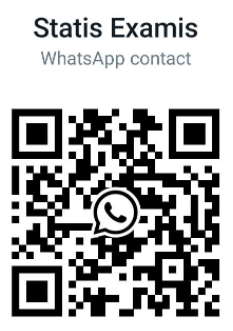Navigation » List of Schools » Glendale Community College » Medical Office Administration » MOA 180 – Health Information Management & HIPAA » Fall 2022 » Exam 2
Question #1
A Too challenging in terms of privacy and security
B Too cumbersome
C All of these
D Too expensive
Question #2
A 80%
B 50%
C 90%
D 70%
Question #3
A Patient-generated data
B Public health
C Clinical decision support
D Disease registry
Question #4
Which exchange organization provides services only in a smaller region, usually a metropolitan area?
A CHIN
B HIO
C IDN
D HIE
Question #5
A CHINs
B HITECH
C HIO
D HIE
Question #6
A Meaningful Use networks.
B SQL reporting services.
C health information exchanges.
D patient education centers.
Question #7
A Clinical Document Architecture
B Continuity of Care Document
C Health Level-7
D Systemized Nomenclature of Medicine – Clinical Terms
Question #8
A educational domains.
B functionality.
C medication management.
D disease surveillance.
Question #9
A Clinical operations
B Administrative policy
C Clinical quality
D Privacy and security
Question #10
A Appropriate authorization process
B All of these
C Identification of the designated record set by the facility
D Identification of the legal record by the facility
Question #11
A Release of information audits
B All of these
C Patient portal
D Master Patient Index
Question #12
A Blue Shield
B Medicare
C Blue Cross
D Medicaid
Question #13
A Patient satisfaction
B Principal diagnosis code
C Date of procedure
D Discharge date
Question #14
A natural language processing.
B computer-assisted coding.
C encoding.
D artificial intelligence.
Question #15
A decreased transparency for clinical providers.
B standardized research data on pharmaceutical usage.
C decreased population health outcomes.
D better clinical outcomes.
Question #16
A updating software.
B technical support.
C data mining.
D interoperability.
Question #17
A All of these
B American Recovery and Reinvestment Act
C Affordable Care Act
D HITECH
Question #18
A Concurrent record
B Live record
C Electronic record
D Hybrid record
Question #19
A It is needed for risk management review.
B All of these
C The patient is readmitted.
D Incomplete documentation has been submitted.
Question #20
A none of these.
B only an EHR record.
C one that a facility would present in response to a subpoena.
D any medical record in a facility regardless of designation.
Question #21
A Administrative
B Reimbursement
C Insurance
D Clinical
Question #22
A hybrid
B electronic
C paper
D ePaper
Question #23
A Bi-annually
B Bi-weekly
C Continuously
D Monthly
Question #24
A none of these.
B paper records.
C tape backup.
D cloud services.
Question #25
A Systemized
B Decentralized
C Centralized
D Localized
Question #26
A A file cabinet for storing patient records
B A record of each patient divided into individual encounters
C An index card with each patient’s contact information
D An EHR to keep track of each patient encounter
Question #27
A Fee-for-service
B Wellness fee
C Fee-for-value
D Meaningful fee
Question #28
A Meaningful fee structure
B Wellness fee
C Fee-for-value
D Fee-for-service
Question #29
A Meaningful Use.
B integrated delivery networks.
C health information exchange.
D population health management.
Question #30
A Primary care physician
B Patient
C Provider
D Healthcare plan administrator
Question #31
A data analysis.
B data collection.
C data application.
D business intelligence.
Question #32
A data collection.
B data analysis.
C data scheduling.
D data marketing.
Question #33
A data mining.
B data abstracting.
C data analysis.
D data entry.
Question #34
A database systems.
B legacy systems.
C information systems.
D management systems.
Question #35
A networking skills.
B healthcare knowledge.
C programming education.
D computer background.
Question #36
A Installation of a stand-alone encoder
B Sharing uniform data from the same information vendor
C Sunsetting a pharmacy inventory application
D Integrating legacy systems with new EHR systems
Question #37
A updating software.
B technical support.
C data mining.
D interoperability.
Question #38
A Monitoring and controlling the project
B Closing the project
C Planning for the project
D Executing the project
Question #39
A EMR.
B digitized format.
C scanning.
D imaging.
Question #40
A offers limited functionality.
B captures more in-depth information.
C does not meet certification requirements of HITECH.
D provides a digital record of the traditional chart.
Question #41
A EHRs take less time for the physician to access.
B EHRs can be used simultaneously by more than one provider.
C EHRs do not have to be as secure as the paper record.
D EHRs are less expensive.
Question #42
A guarantor.
B insurance company.
C care giver.
D attorney.
Question #43
A a nurse, medical assistant, or other technician.
B a doctor.
C a third-party payer.
D HIM personnel.
Question #44
A only documents the health status of the patient.
B is not protected from legal proceedings.
C serves as a means of communication among the healthcare team.
D is not used by other ancillary personnel.
Question #45
A American Medical Association
B American Medical Education Association
C American College of Surgeons
D American Physician’s Association
Question #46
A Plymouth Hospital.
B New York Hospital.
C Boston Hospital.
D Pennsylvania Hospital.
Question #47
A Benjamin Franklin.
B Thomas Jefferson.
C George Washington.
D Andrew Jackson.
Question #48
A TEFRA.
B ARRA.
C OBRA.
D HIPAA.
Question #49
A Conditions of Participation (CoP).
B Prospective Pay System (PPS).
C Professional Standards Review Organizations (PSROs).
D Title XVII of the Social Security Act of 1935.




